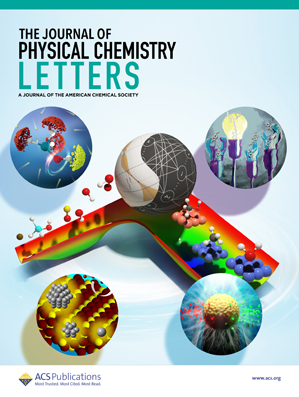Self-Powered Ultraviolet Sensor Based on CsPbCl3 for Skin Safety Monitoring.
IF 4.8
2区 化学
Q2 CHEMISTRY, PHYSICAL
引用次数: 0
Abstract
Extended exposure to ultraviolet (UV) radiation significantly increases the risk of skin cancer. The World Health Organization reports that when the UV index surpasses 7, the skin becomes vulnerable to diseases like erythema. There is an urgent need for an UV photodetector capable of real-time UV intensity monitoring. In recent years, cesium lead chloride (CsPbCl3) has emerged as a superior candidate material in the field due to its wide bandgap of 2.8 eV and outstanding UV optoelectronic and ferroelectric performance. In this study, a self-powered CsPbCl3 thin-film photodetector was fabricated by a two-step spin-coating method along with a seven-level UV detection system. When the UV level reaches or exceeds level 7, the device sends a warning via Wi-Fi, enabling individuals to take prompt protective measures against harmful UV radiation. Additionally, the potential of the detector for optical imaging was demonstrated by reconstructing the image of the letters "UJS" using single-pixel imaging techniques. The findings indicate that the self-powered CsPbCl3 UV photodetector holds substantial promise for skin health management and optical imaging.基于CsPbCl3的皮肤安全监测自供电紫外传感器。
长时间暴露在紫外线辐射下会显著增加患皮肤癌的风险。世界卫生组织报告说,当紫外线指数超过7时,皮肤就容易患上红斑等疾病。目前迫切需要一种能够实时监测紫外线强度的紫外光电探测器。近年来,氯化铯铅(CsPbCl3)由于具有2.8 eV的宽带隙和出色的紫外光电和铁电性能而成为该领域的优越候选材料。本研究采用两步自旋镀膜法和七能级紫外检测系统制备了自供电CsPbCl3薄膜光电探测器。当紫外线水平达到或超过7级时,设备通过Wi-Fi发送警告,使个人能够及时采取防护措施防止有害的紫外线辐射。此外,通过使用单像素成像技术重建字母“UJS”的图像,证明了探测器在光学成像方面的潜力。研究结果表明,自供电的CsPbCl3紫外光电探测器在皮肤健康管理和光学成像方面具有巨大的前景。
本文章由计算机程序翻译,如有差异,请以英文原文为准。
求助全文
约1分钟内获得全文
求助全文
来源期刊

The Journal of Physical Chemistry Letters
CHEMISTRY, PHYSICAL-NANOSCIENCE & NANOTECHNOLOGY
CiteScore
9.60
自引率
7.00%
发文量
1519
审稿时长
1.6 months
期刊介绍:
The Journal of Physical Chemistry (JPC) Letters is devoted to reporting new and original experimental and theoretical basic research of interest to physical chemists, biophysical chemists, chemical physicists, physicists, material scientists, and engineers. An important criterion for acceptance is that the paper reports a significant scientific advance and/or physical insight such that rapid publication is essential. Two issues of JPC Letters are published each month.
 求助内容:
求助内容: 应助结果提醒方式:
应助结果提醒方式:


